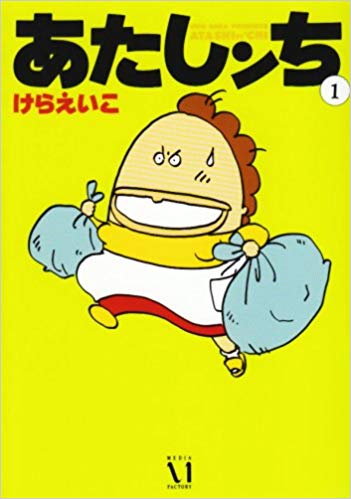
Missing cozy family life? Desperate for a break to just forget everything and relax?
Well, if this is the case, Atashin chi, a Japanese manga by Eiko Kera will help you find some much-needed comfort.
Originally written in Japanese and translated into English for distribution in the U.S., this book explores the everyday life of a Japanese housewife and her teenage daughter, Mikan. The name also means “our home” in Japanese.
This book might be meaningful for teens who grew up in Korea or Japan, because the animation of these series broadcasted on major animation channels around 2011. The series was also serialialized on Yomiuri Newspaper from 1994 to 2012. Reading this book might trigger back some heartwarming memories of your childhood. I personally remember my five year old self gazing at the television screen, looking at the mom
This particular manga consists of short chapters with short episodes about family life. At the end of each chapter is a manga illustration, perhaps like the main character enjoying a watermelon.
While this book is lighthearted, it brings out the love parents have for their children. The mother of the family can be seen cooking and arranging new furniture for her family, and the father is seen almost always getting ready for work. The high school student Mikan and her mischievous brother, Yuzuhiko sometimes brings trouble. Even though there is no particular overall storyline, each panel never fails to bring out the beauty and joy of living as a family.
The main reason I would recommend this to a fellow teen is because it displays details of Japanese culture. Living in apartments, going out to karaoke with friends, and enjoying a long, relaxing bath are all integral parts of Japanese culture.
Historically, there is an arguably uneasy relationship between Americans and the Japanese. The United States and Japanese were on different sides in World War 2, and Japanese in America were sent to concentration camps during the war. Because of this events, it can be positive and meaningful if teens today can read this Japanese book and appreciate its culture, to possibly reconcile past differences and to strive for a more peaceful future.
My favorite panel in the manga is the first panel. Mama makes Mikan a bento, a lunch mothers pack for their children to eat at school. Mikan notices that her friends have more fancy bentos with sausage and more diverse kinds of rice. Mikan gets back home and asks Mama to make a better bento, and when she is asked what a better bento is, she replies that it should be colorful. The next day, Mikan was looking forward to eating a fancy bento like her classmates, but she opens the lunchbox and finds that Mama happened to use colorful vegetables and white rice! Other episodes include Mama in the dark waiting for her daughter to come back from karaoke, etc. These episodes show many playful aspects of a family relationship, especially the relationship between a mother and her children.